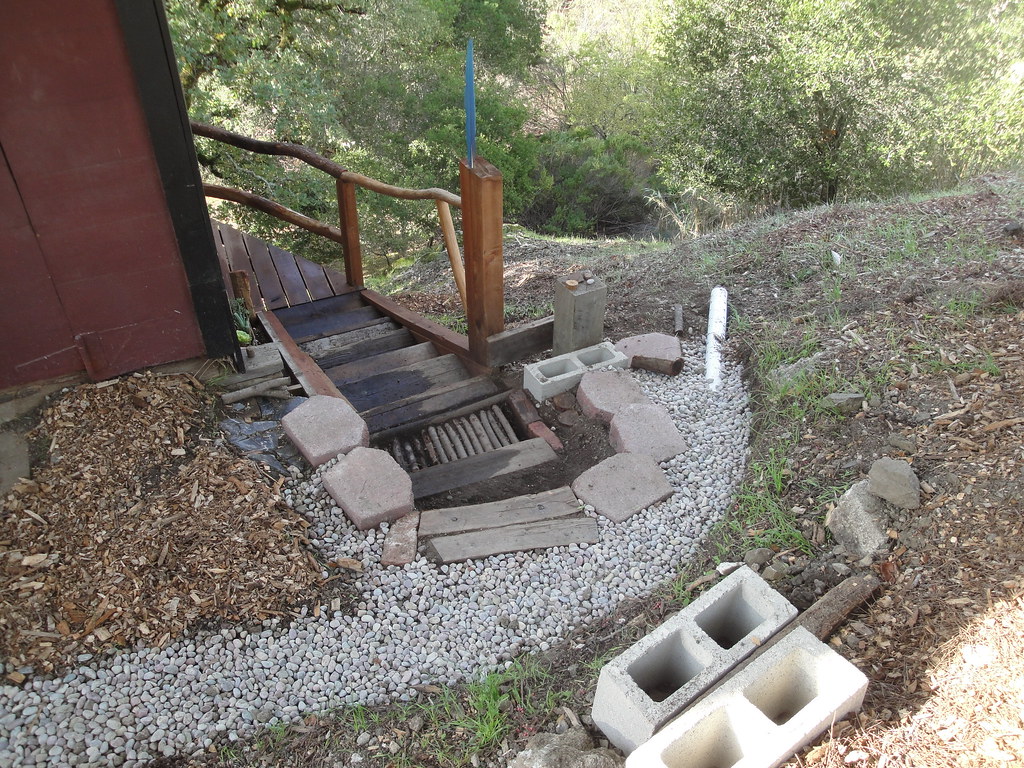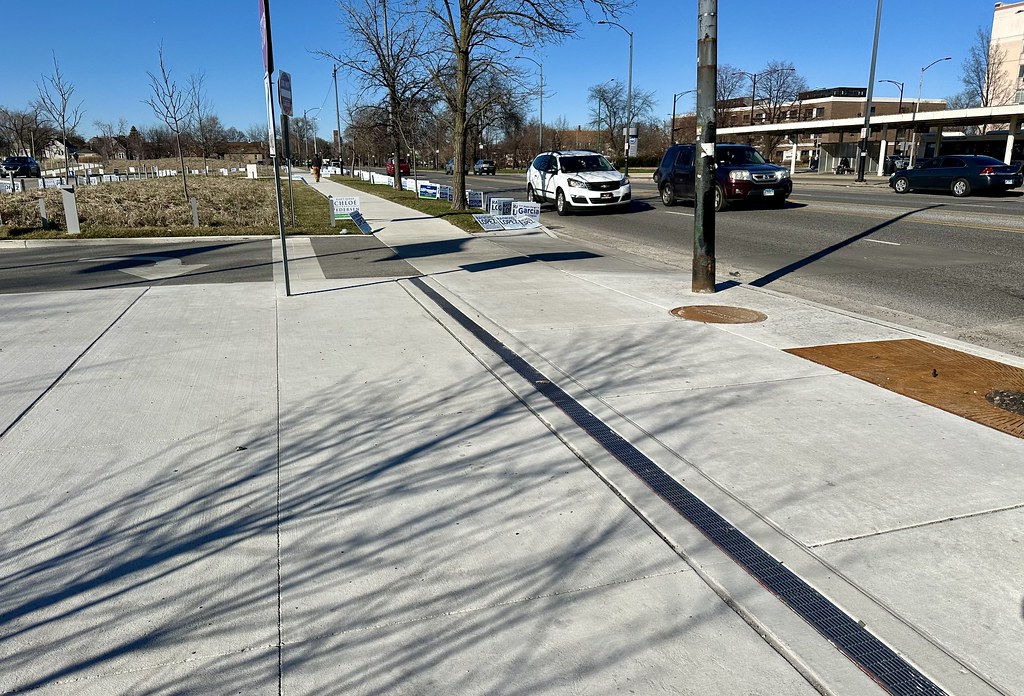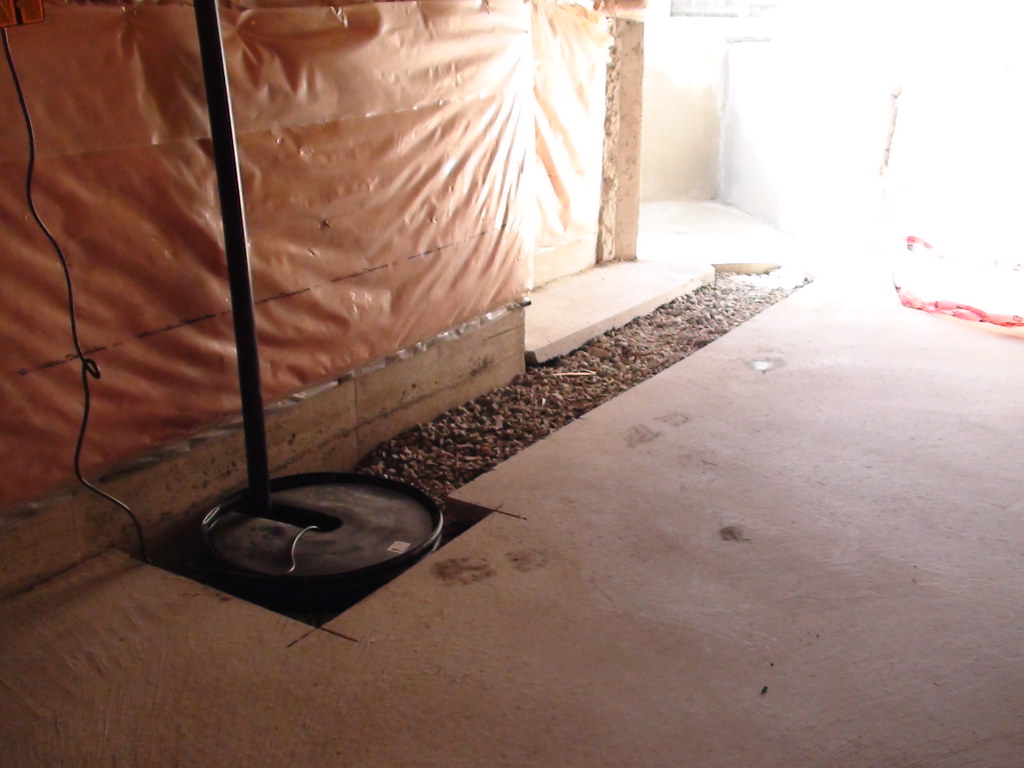French Drain Sump Pump Servicesin Romeo MI
French Drain Installation for Long-Lasting Water Control
We Are Locally Owned & Operated For Over 37 Years
Contact Us Today!
We Serve Businesses In And Around The Following Cities:
About French Drain Sump Pump Services
Introduction: The Needs and Benefits of a French Drain Sump Pump
When it comes to commercial properties in Romeo, there’s no denying the importance of an efficient drainage system, specifically a French drain sump pump. This system is crucial for mitigating water damage, optimizing building health, and ensuring a safe and healthy environment. The relevance of a professionally installed French drain and a high-quality sump pump can’t be overstressed, solving numerous issues that often plague commercial buildings.
What is a French Drain Sump Pump?
The design of this ingenious underground system comprises two key components. The French drain works by collecting excess ground and surface water, directing it away from a building’s foundation. The sump pump comes into play when the water is guided to a sump pit or basin, from here it is moved out and away from the property. The synergy of a French drain and sump pump creates an effective tool for flood prevention in basements and for preserving the integrity of commercial foundations.
The Installation Process of a French Drain Sump Pump
The process of installing a French drain sump pump entails intricate planning and professional intervention. It begins with site assessment to determine the best location for the French drain and sump pump placement. The next step involves digging a trench around the perimeter of the foundation and a well for the sump pump. A layer of gravel is then placed in the trench, followed by laying a perforated pipe which will direct the water into the sump pit. After the setup is complete, all the elements are covered by gravel and soil, leaving no apparent trace of the buried sump pump discharge pipe or the sump discharge line.
The process can be carried out in basements as well, offering a solution for chronic basement flooding issues. French drain sump pump installation in basements mainly follows the same process, providing effective water control. However, the cost can significantly vary depending on factors such as size, location, materials used, and the complexity of the project. Acquiring the services of a company like D&J Contracting would greatly streamline and simplify this process, ensuring quality and durability.
The Benefits and Success Stories of French Drain Sump Pump Installation
The installation of a French drain sump pump in commercial properties provides tangible benefits and has helped numerous businesses in Romeo. Installation of this drainage system efficiently keeps water from reaching the foundation or entering the basement, making it a viable preventive measure against water damage. It significantly reduces the risks of mold, mildew, and structural damage, saving the property owner expensive repairs and health hazards caused by moisture.
When a local coffee shop in Romeo suffered from repetitive basement flooding issues, D&J Contracting was called upon. After the implementation of a French drain combined with a sump pump system, their basement flooding issues became a thing of the past. This real-world success story represents the capability of a well-installed French drain sump pump system to solve serious water drainage problems.
Cost Implications and Considerations
While the cost of a French drain sump pump installation can vary, the investment is often balanced by the perceived value it brings to the buildings. Many property owners have realized the cost-effectiveness of this system in comparison to frequent water mitigation efforts and potential structural damages. More importantly, the tailored services provided by experienced professionals like D&J Contracting ensure that these the French drain and sump pump cost is manageable within your budget while meeting all relevant safety measures.
The conclusion is simple. For commercial property owners in Romeo, a French drain sump pump system is an effective, reliable, solution for water-related concerns. A proper drainage system not only ensures long-term cost savings, but it also preserves the integrity of the foundation and enhances the use and value of a commercial property. It makes perfect sense to secure your property’s health with a proven solution, and to partner with a local, trusted source that values quality and customer satisfaction in their work.
French Drain Sump Pump Services Gallery


Call Us Today to receive your Free Quote for
French Drain Sump Pump in Romeo
Serving: Romeo, Michigan

About Romeo, Michigan
A settlement here was originally occupied by the indigenous Chippewa (Ojibwe), an Algonquian-speaking people who were part of a large language family of tribes extending to the Atlantic Coast. Those tribes around the Great Lakes are thought to have migrated to this area by the 12th century.
The early European-American settlers in this area referred to the Chippewa settlement as “Indian Village”. In the 1820s and 1830s more migrant European-American families began to settle in the area, building homes and establishing businesses. They renamed the community “Hoxie’s Settlement”, after a man who opened an inn on Main Street. In 1839, Hoxie’s Settlement became incorporated and was renamed as the village of Romeo. The name was suggested by the wife of local merchant Nathaniel Taylor because it was “short, musical, classical and uncommon.” Romeo celebrated its 175th anniversary on March 9, 2013.
Romeo once served as a trading center for the timber industry, and had many mills processing lumber from the region. Many wealthy timber families resided there. Dozens of stately Victorian mansions survive. Romeo is distinct in the area for having a fairly robust, traditional downtown, which has never suffered a major fire. Because of this, some stores and restaurants downtown have features such as original tin ceilings from the Civil War. In the early 20th century, Romeo was the site of an early business devoted to the new automobile industry: the Detroit Auto Vehicle Company operated here from 1904 until 1908.
The village is in northwestern Macomb County, situated at the southeast corner of Bruce Township, with a portion extending south into Washington Township. Armada Township is adjacent to the east and Ray Township to the southeast. M-53 passes through the east side of the village, leading north 16 miles (26 km) to Imlay City and south 30 miles (48 km) to the eastern side of Detroit.
According to the United States Census Bureau, the village of Romeo has a total area of 2.05 square miles (5.31 km), of which 0.002 square miles (0.005 km), or 0.10%, are water. East Pond Creek crosses the easternmost part of the village, flowing east to the North Branch of the Clinton River, part of the Lake St. Clair watershed.
| Census | Pop. | Note | %± |
|---|---|---|---|
| 1850 | 330 | — | |
| 1880 | 1,629 | — | |
| 1890 | 1,637 | 0.5% | |
| 1900 | 1,580 | −3.5% | |
| 1910 | 1,787 | 13.1% | |
| 1920 | 2,102 | 17.6% | |
| 1930 | 2,283 | 8.6% | |
| 1940 | 2,627 | 15.1% | |
| 1950 | 2,985 | 13.6% | |
| 1960 | 3,327 | 11.5% | |
| 1970 | 4,012 | 20.6% | |
| 1980 | 3,509 | −12.5% | |
| 1990 | 3,520 | 0.3% | |
| 2000 | 3,721 | 5.7% | |
| 2010 | 3,596 | −3.4% | |
| 2020 | 3,767 | 4.8% | |
| U.S. Decennial Census | |||
As of the census of 2010, there were 3,596 people, 1,501 households, and 979 families residing in the village. The population density was 1,780.2 inhabitants per square mile (687.3/km). There were 1,659 housing units at an average density of 821.3 per square mile (317.1/km). The racial makeup of the village was 91.9% White, 3.8% African American, 0.2% Native American, 0.5% Asian, 1.1% from other races, and 2.6% from two or more races. Hispanic or Latino people of any race were 5.7% of the population.
There were 1,501 households, of which 32.2% had children under the age of 18 living with them, 46.2% were married couples living together, 14.9% had a female householder with no husband present, 4.1% had a male householder with no wife present, and 34.8% were non-families. 30.8% of all households were made up of individuals, and 13.6% had someone living alone who was 65 years of age or older. The average household size was 2.36 and the average family size was 2.96.
The median age in the village was 40.9 years. 23.5% of residents were under the age of 18; 7.7% were between the ages of 18 and 24; 24.1% were from 25 to 44; 29.4% were from 45 to 64; and 15.3% were 65 years of age or older. The gender makeup of the village was 46.4% male and 53.6% female.
As of the census of 2000, there were 3,721 people, 1,528 households, and 993 families residing in the village. The population density was 1,842.8 inhabitants per square mile (711.5/km). There were 1,605 housing units at an average density of 794.9 per square mile (306.9/km). The racial makeup of the village was 92.66% White, 4.35% African American, 0.16% Native American, 0.40% Asian, 0.11% Pacific Islander, 0.67% from other races, and 1.64% from two or more races. Hispanic or Latino people of any race were 2.74% of the population.
There were 1,528 households, out of which 33.3% had children under the age of 18 living with them, 48.2% were married couples living together, 13.5% had a female householder with no husband present, and 35.0% were non-families. 31.3% of all households were made up of individuals, and 13.2% had someone living alone who was 65 years of age or older. The average household size was 2.40 and the average family size was 3.04.
In the village, the population was spread out, with 26.1% under the age of 18, 8.2% from 18 to 24, 30.1% from 25 to 44, 21.4% from 45 to 64, and 14.2% who were 65 years of age or older. The median age was 36 years. For every 100 females, there were 87.2 males. For every 100 females age 18 and over, there were 82.5 males.
The median income for a household in the village was $48,015, and the median income for a family was $60,179. Males had a median income of $51,875 versus $27,696 for females. The per capita income for the village was $22,588. About 3.2% of families and 3.9% of the population were below the poverty line, including 6.5% of those under age 18 and 3.9% of those age 65 or over.
The government of the village of Romeo consists of elected and appointed officials. The elected officials include six council members, one president, treasurer and clerk. The appointed officials include the Chief of Police, Department of Public Works Director, and Village Administrator. Currently, the elected clerk also holds the appointed position of Village Administrator. The day-to-day operations of the village are handled by the Clerk/Administrator.
Since the turn of the 21st century, Romeo has worked to upgrade its infrastructure. It has improved the streetscape on Van Dyke Avenue, the main road through the village, and installed a new water tower. It had earlier established one of the few wastewater treatment plants in the region. While most of the metropolitan region receives water and sewage service from the City of Detroit, Romeo independently sustains its own supply of water and manages treatment of village sewage. This was especially valuable during the blackout that occurred throughout the entire northeastern United States on August 14, 2003. Romeo was one of the few areas in the Detroit metropolitan area to have clean running water. More recent infrastructure improvements include a complete renovation of the village water system, and replacement of all the sidewalks throughout the village.
Call Us Today to receive your Free Quote for
French Drain Sump Pump in Romeo
Related Services in Romeo, Michigan
We Serve Businesses In The Following Zip Codes:
48007, 48015, 48021, 48026, 48035, 48036, 48038, 48042, 48043, 48044, 48045, 48046, 48047, 48048, 48050, 48051, 48066, 48071, 48080, 48081, 48082, 48083, 48084, 48085, 48088, 48089, 48090, 48091, 48092, 48093, 48098, 48099, 48225, 48230, 48236, 48310, 48311, 48312, 48313, 48314, 48315, 48316, 48317, 48318, 48397